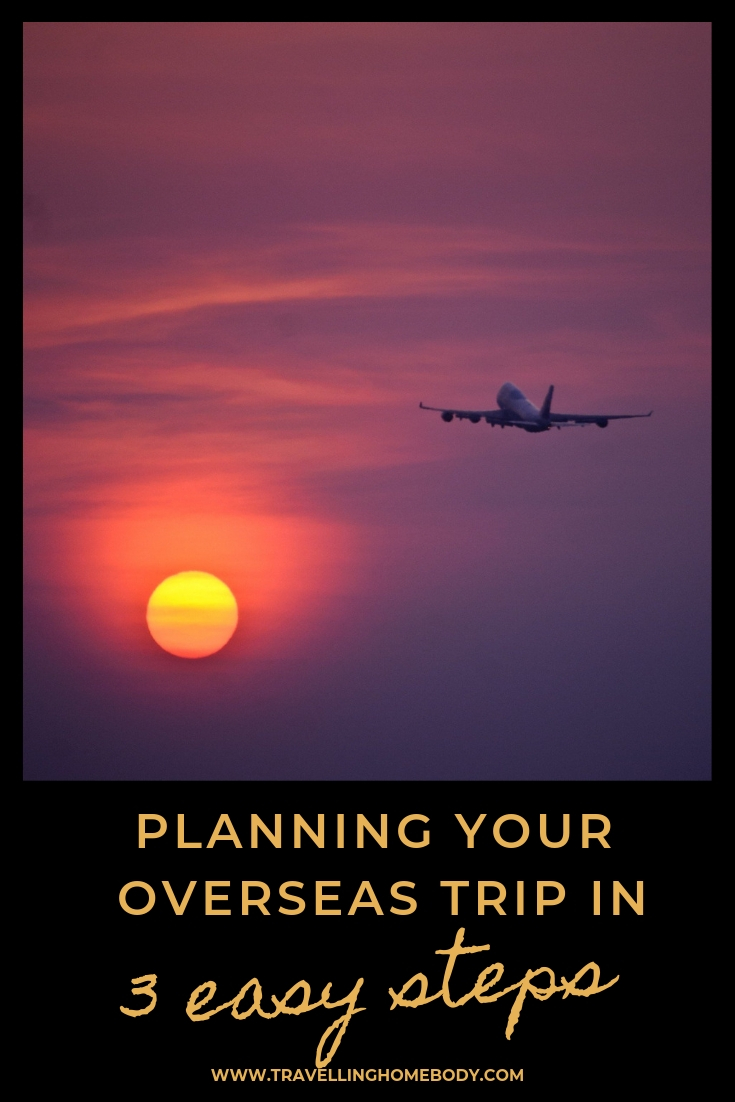I recently wrote about things I used to hate about travelling, but now love. Actually, it’s more in line with “hate less” than “love”. One of these things is travel planning. I used to leave it all up to my travel agent and tour companies, but now — after Bali, where I first organised my own travel — I plan my own trips.
I wanted to share my process with you, not because it deviates from what other people (probably) do, but because I have a specific approach within the steps. I’m not one who likes to leave things to the last minute, or wing it for accommodation once I arrive at my destination. I like to know that everything is well organised ahead of time. This post doesn’t look at your “on the ground” itinerary, though. I’ll write another post about that.
Table of Contents
Step 1: Book your flights

Once you know your travel dates, I like to check Kayak for flight times and airlines. There are other websites and apps that do a similar job, but I like Kayak’s interface. I’m pretty fussy about flight times i.e. unless there is no other option, I won’t take an international flight before 9:00am and I don’t like to arrive late in the evening.
I prefer a direct flight because less can go wrong with luggage, and while I don’t like a long layover, I prefer at least 2 hours between flights if I have to connect. You may be more flexible in your approach, but these are my flight preferences. I’m not particularly price sensitive, but I like a good deal.
Once I’ve found flights of interest, I’ll go to that airline’s website and make my booking there. The reason for this approach is that I find it easier to deal with the airline direct if there are issues (e.g. flights cancelled by volcanic ash) rather than a third-party site like Expedia, Webjet or even Kayak.
I may have to open an account with the airline, but that’s neither here nor there because I have a password manager*. If there are a number of connecting flights, I’ll often go old school and use a pen and paper to jot down the various options for departures, arrivals and layover times. I’m visual when it comes to processing information, and it’s just easier for me to connect all the dots this way.
Step 2: Book your accommodation
 At the same time that I’m looking at flights, I’m also checking out possible accommodation choices. While I have used Airbnb in the past (and will use it again), I prefer to use Booking.com*, mainly because I don’t have to pay until I’ve stayed there (unlike Airbnb) and nine times out of ten you can cancel your accommodation without paying anything—not that I’ve ever done that. I just like the “get out of jail free” card option. Accommodation choices range from budget to high-end and everything in between, and you can filter to narrow down.
At the same time that I’m looking at flights, I’m also checking out possible accommodation choices. While I have used Airbnb in the past (and will use it again), I prefer to use Booking.com*, mainly because I don’t have to pay until I’ve stayed there (unlike Airbnb) and nine times out of ten you can cancel your accommodation without paying anything—not that I’ve ever done that. I just like the “get out of jail free” card option. Accommodation choices range from budget to high-end and everything in between, and you can filter to narrow down.
I filter according to price (I’m a mid-range girl) and reviews (nothing less than 8.0). I also like wi-fi, air conditioning and a swimming pool. Breakfast is nice, but not important. And I prefer smaller, quieter, boutique style venues. I’ll read 10 reviews and check the photos.
If nothing jumps out at me on Booking.com* or I can’t make a decision, I’ll head on over to TripAdvisor and see if there is anything there that takes my fancy (I found Jukung Guest House* in Bali that way), or just do a general search “affordable accommodation in…” on Google (I found the East Indies Mansion* in Penang that way). I’ll then check on Booking.com* for availability and proceed with the booking if it is.
I know people who book direct with the accommodation because it’s cheaper, but I prefer to use Booking.com because I like their system.
Step 3: Organise incidentals
 And by incidentals I mean transfers from the airport and visas*. I’m not one to leave things to chance (and I like seeing my name on a sign when I arrive in a country where no one knows me!) so I’ll make sure that I have someone pick me up from the airport. It could be the hotel’s shuttle service, or something I organise myself*, but I don’t want to have to work out the public transport system (particularly after a long flight) or worry that I’m going to be scammed by a taxi-driver. Yes, it’s more expensive, but for peace of mind, it’s worth it.
And by incidentals I mean transfers from the airport and visas*. I’m not one to leave things to chance (and I like seeing my name on a sign when I arrive in a country where no one knows me!) so I’ll make sure that I have someone pick me up from the airport. It could be the hotel’s shuttle service, or something I organise myself*, but I don’t want to have to work out the public transport system (particularly after a long flight) or worry that I’m going to be scammed by a taxi-driver. Yes, it’s more expensive, but for peace of mind, it’s worth it.
Not all countries require you to have a visa. Of those that do, you can get some visas on arrival or via an easy online transaction, yet other countries require you to have your visa sorted before you arrive. It’s easy to check*, but I would advise you to organise your visa ahead of time (if you need one) and make sure you aren’t scammed by online visa sites — check with the Embassy or Consulate if you aren’t sure if something is legitimate. And leave enough time, especially if you have to post your passport to the Embassy!
I then log all these details (flights and accommodation) on my Super Smart Tag if I have checked luggage (did I mention I’m paranoid about lost luggage) and on TripIt, so everything is in one place and I can share my travel plans easily with friends and relatives.
So that’s how I plan my trips. Do you do anything similar, or is your approach different? I’d love to hear about it!
Photo credit: Rinaldo W. via Visualhunt.com / CC BY
